





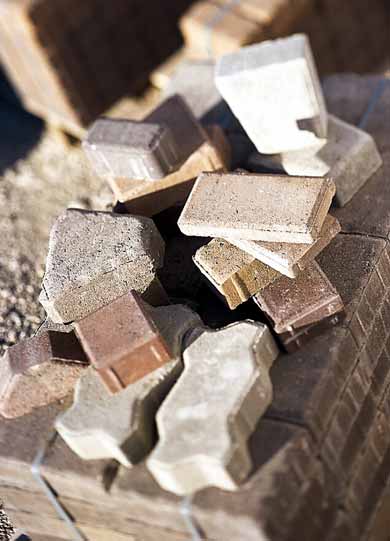 Bricks come in more shapes,
colors, and sizes than any
other hardscape material.
Bricks come in more shapes,
colors, and sizes than any
other hardscape material.
Unless you're blessed with a landscape that's already outfitted with all the hardscape you need, you're going to want to add a few paths, planting beds, retaining walls, and perhaps a patio or two to your outdoor haven. Of the materials you can choose to form the bones of your garden, stone is the best choice, adding permanent value and beauty to your home. Once you get the "skeleton" in place, it's easy to flesh out the rest of the "body" with plant material.
True, stone costs a good deal and it's hard, heavy, and unyielding (as are 8-foot Norway pines at planting time). But you can buy native rock from a local stoneyard, which makes stone more affordable than you might think. Remember this, too: Rock is permanent, making it a more sensible financial decision in the long run than installing wood retaining walls or ground-level decks, which eventually will rot. As for installation, if you can afford to hire a contractor to install your stone projects, go for it. If not, buy a couple of good books and start with a small project. The techniques you learn while building a small stone retaining wall around a tree will stand you in good stead when you move on to a garden path. Tap a couple of handy friends and exchange labor for labor.
So what do you need to know before you check out the local stone dealer? Just some rough dimensions, that's all: length and height of retaining walls or planting beds, and length and width of patios or paths. Your stone dealer will show you what rock is available for your project, how many tons you'll need, tips on installation, and so on.
continue reading belowDownload our free rock profile chart with information on the types of stone available and their cost. (Downloading requires Adobe Acrobat software)
Rock profile chart
Download Adobe Acrobat
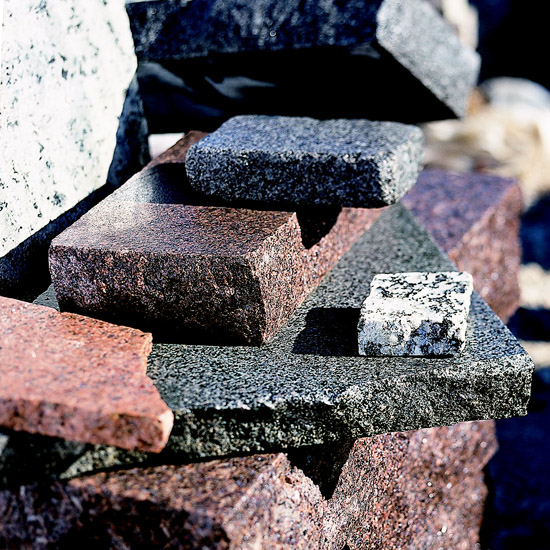 Granite
Granite
The hardest stone used in landscaping, granite also boasts some of the most amazing colors, particularly when wet. Available primarily in carnelian (a reddish gray), charcoal gray, and black and white, the prices are the same regardless of color. "Granite is a waste byproduct of commercial construction," says David King of Rhino Materials. "It used to be thrown away but is now cut to standard sizes and given a thermal finish to roughen up the slick surfaces used to face buildings." The stone is harder to work with than limestone and more expensive to install. "Granite's caught on big in the Chicago area," King adds.
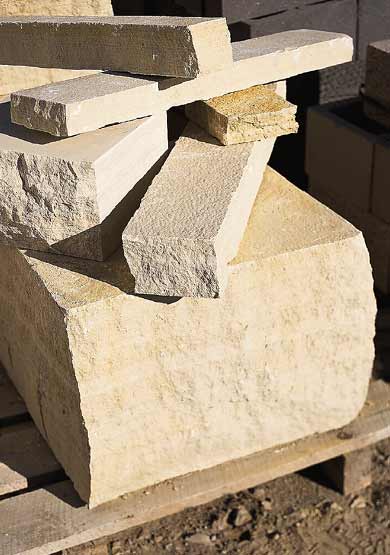 Iowa limestone
Iowa limestone
Iowa limestone (a premium limestone because of its consistent color and density) and all other limestones are cut into various sizes and shapes. "The more times a piece of stone is handled at a quarry, the more expensive it will be," King says.
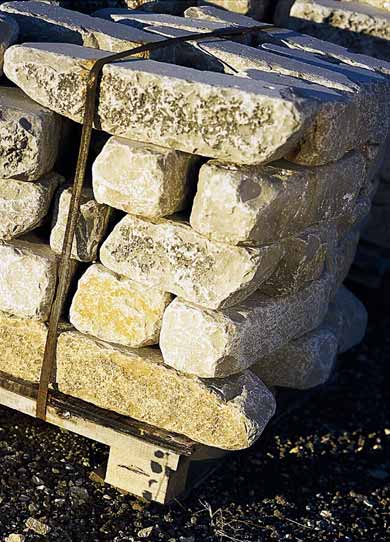 Lannon stone
(Wisconsin limestone)
Lannon stone
(Wisconsin limestone)
White-gray Lannon stone (a Wisconsin limestone) is denser than Iowa limestone. These wall blocks have been tumbled in a steel drum at the quarry to create a rough, natural-look stone as easy to build with as untumbled wall blocks.
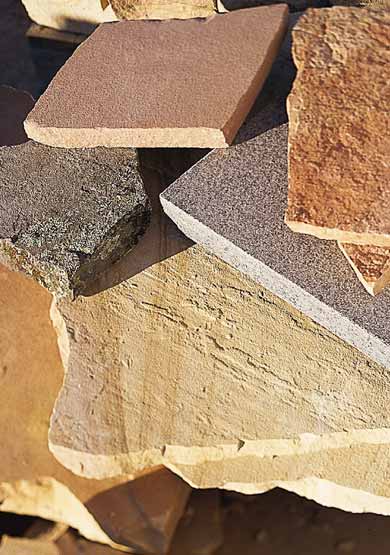 Sandstone
Sandstone
Sandstone comes in the widest range of colors and is considerably softer than limestone, making it very easy to work with. Prices are comparable to those of limestone.
Quarried stone comes in a variety of sizes and shapes. In fact, almost every stone is available in every shape for landscaping, which means a uniform look can be achieved. Because of the inexact nature of stonecutting, sizes are approximations; lengths vary. Stone is available as:
Copyright © www.100flowers.win Botanic Garden All Rights Reserved